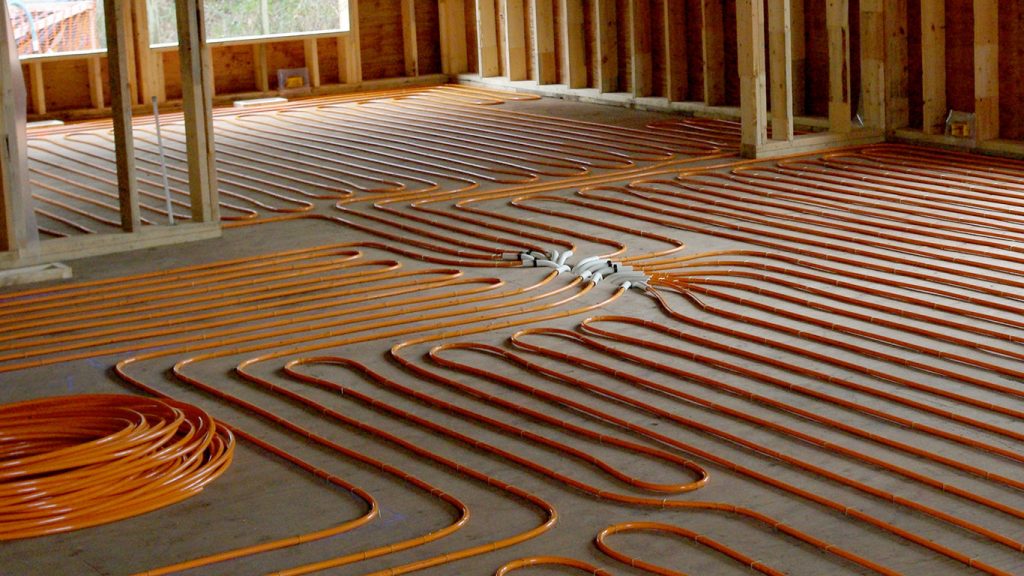If you’re shopping for a new home, or building one from scratch, you’ll have to choose a heat type. There are many types of heating available, with radiant being my personal favorite. OK that’s not true…a wood stove is my favorite but I’m definitely not going to heat my whole house with one, so radiant wins! In this post we’ll explore some of the pros and cons of radiant heating in a home.
Types of Radiant Heat
Radiant heat is heat energy transmitted by electromagnetic waves in contrast to heat transmitted by conduction or convection. Think of the heat you feel when sitting in front of a fire. That’s radiant heat. Compare that to the heat you feel when standing in front of a heating vent – that’s convection. And finally, the heat you feel when you touch something hot – that’s conduction.
Radiant heating in a home is typically in the floor or in panels on the wall. To heat the floor, hot water is channeled just beneath the surface of the floor. It typically stays warm all day to keep the space warm. Radiant floor heating is popular and gives a home a very cozy vibe. It must be added before the floor is laid though, so it tends to be uncommon.

Benefits of Radiant Heating
- It’s Cozy. Radiant floor heating in particular provides a warm surface to walk around on in the winter months.
- Even Heat Distribution. Radiant heat slowly rises evenly throughout a room, and maintains a consistent temperature throughout the day. Forced hot air, on the other hand, tends to yield warm pockets and cold pockets.
- It Can Be Zoned. Radiant heat can be zoned to only heat certain parts of the house. Bathrooms, for instance, can be heated all year without heating the rest of the house.
Downsides of Radiant Heating
- Cost & Complexity. Radiant heating is not simple. It must be well thought out and installed prior to floors being laid. It is very difficult to retrofit a house with radiant heat.
- Difficult to Service. Because it is encapsulated in the floors, it is rather difficult to service a radiant heating system. That said, most of the issues that require service are in the boiler room so this is not a great concern.
- Slow to Heat. Radiant heat can take a very long time to heat a room. As a result, it is not ideal for second homes where heat is only needed during short periods of time while you are visiting.
Is Radiant Heating A Good Investment?
If you’re looking at building a new home, I highly recommend radiant floor heating. It is super cozy and provides nice, even heat. If you’re on the fence, check out our post here on choosing a heating system for your home. A hydronics system which combines a boiler (which can be used for radiant heat) and forced hot air (to quickly heat a space) is a great compromise that gives you the best of both worlds when it comes to home heating. Check out this great article here as well for more information on radiant floor heating: Heated Floors: Everything You Need to Know.
To get the most heat per gallon, be sure to get an oil-fired system or a natural gas system to save fuel costs. Avoid propane as this tends to be the most expensive option for heating your home. And when you get low on oil, you can always order heating oil online right on FuelSnap.
Happy heating,
Steve



